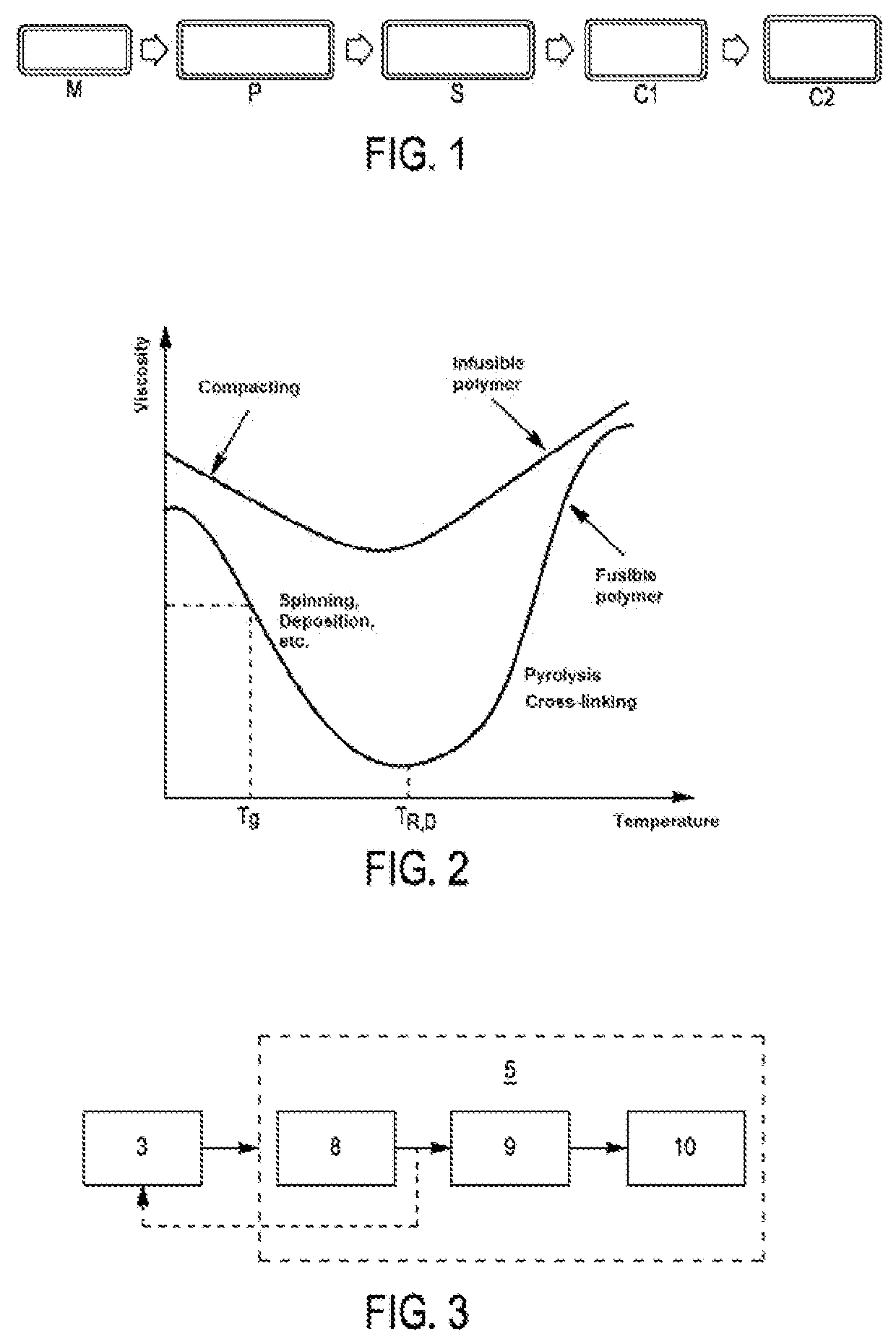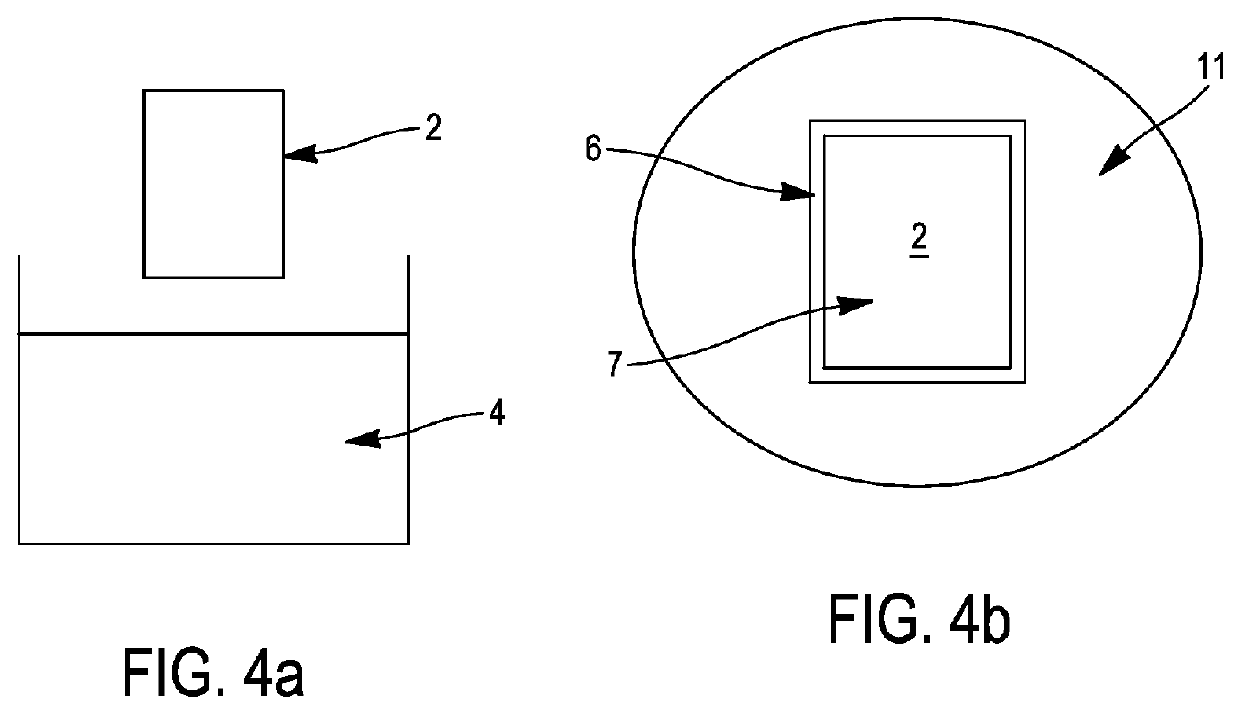Ceramic coating for foundry core
- Summary
- Abstract
- Description
- Claims
- Application Information
AI Technical Summary
Benefits of technology
Problems solved by technology
Method used
Image
Examples
example embodiment
of a Coating
[0172]An example of the treatment composition 4 for dip coating 3 comprises:[0173]A mass proportion comprised between 45% and 70% of Terpineol solvent, preferentially between 50% and 65%, for example 53%,[0174]A mass proportion comprised between 15% and 40% of SILRES MK® (polysiloxane preceramic polymer, having a theoretical conversion rate of ceramic to silicon dioxide SiO2 or to silicon oxycarbide Si—O—C of 80% by mass), preferentially between 20% and 35%, for example 27%,[0175]A mass proportion comprised between 10% and 30% of fine silica (fine is understood to mean for example that 10% of the grains have a diameter less than 3 microns, 50% of the grains have a diameter less than 11 microns, and 10% of the grains have a diameter greater than 38 microns), preferentially between 15% and 25%, for example 20%.
[0176]In a first step the dissolution of the preceramic polymer in Terpineol is carried out at 60° C. under magnetic stirring in a beaker for at least 30 minutes. Th...
PUM
| Property | Measurement | Unit |
|---|---|---|
| Length | aaaaa | aaaaa |
| Fraction | aaaaa | aaaaa |
| Fraction | aaaaa | aaaaa |
Abstract
Description
Claims
Application Information
 Login to View More
Login to View More - R&D
- Intellectual Property
- Life Sciences
- Materials
- Tech Scout
- Unparalleled Data Quality
- Higher Quality Content
- 60% Fewer Hallucinations
Browse by: Latest US Patents, China's latest patents, Technical Efficacy Thesaurus, Application Domain, Technology Topic, Popular Technical Reports.
© 2025 PatSnap. All rights reserved.Legal|Privacy policy|Modern Slavery Act Transparency Statement|Sitemap|About US| Contact US: help@patsnap.com


